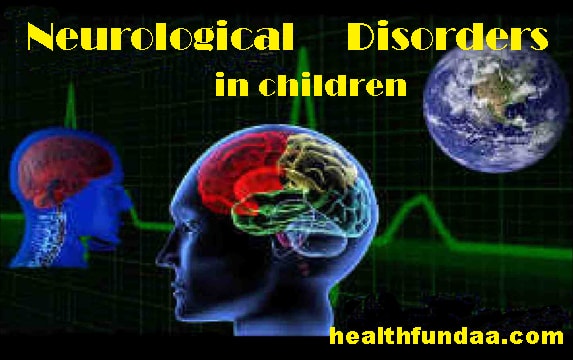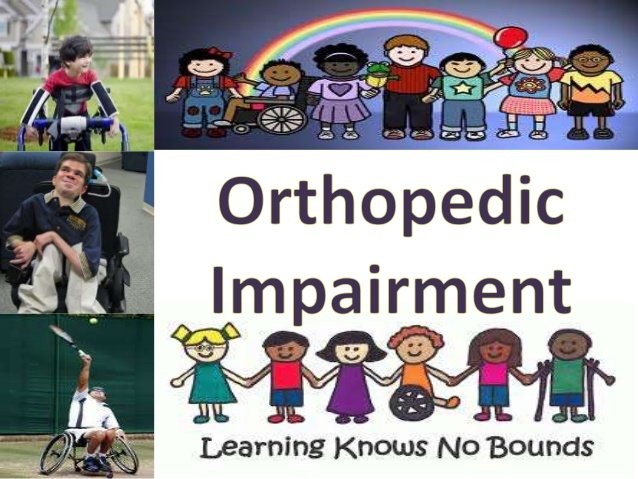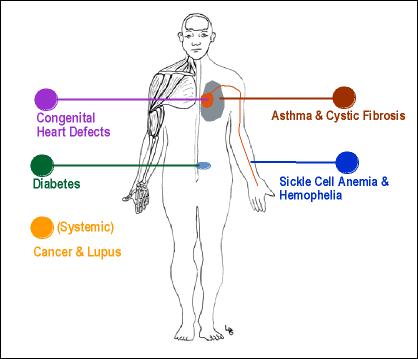THE PHYSICALLY CHALLENGED AND CHILDREN WITH HEALTH PROBLEMS.
Physically Challenged Children are those with chronic health problems, or with crippling conditions or those with diseases or injuries to the nervous system. Nwoye(1988) opined that physical impairment has to do with limitations constituted to an individual, person or child, by his inability to use the limbs, or any part of his body, or limitations constituted to him by lack of functioning of any part of his body, this making it impossible for h to go about his normal daily duties, or live a normal life. MBA,(1987) observed that the term "physically disabled" is used to refer to a variety of handicapped individuals,such as the orthopaedically handicapped, the crippled, the physically impaired,the motor-impaired, and the neurological impaired.
Kirk (1972), stated that those children who have these problems comprise heterogeneous groups with varying disabilities, each has a unique problem which limits the effectiveness with which a child can cope with the academic, social and emotional expectations of the school and community.
TYPES AND CAUSES OF THE PHYSICAL AND HEALTH IMPAIRMENT
According to MBA, (1987) the term "physical disabled" is used to refer to a variety of handicapped individuals. They are classified under three major groups.
1: NEUROLOGICAL IMPAIRMENTS: Neurogically impaired are those whose handicap condition is due to lack of complete development or injury to the central nervous system. In other words, it is the conditions, which are caused by injury to, or incomplete development of the central nervous system (the brain and the spinal cord). For example, they cause speech disorders or poor motor co-ordination and paralysis. The damage or lack of development will result in various disabilities depending on the affected part. Cerebral palsy refers to a condition characterized by paralysis, weakness, incoordination, and or other motor dysfunctions due to damage of the child's brain before it has matured (Thompson, Rubin and Volunteer, 1983).

source
Ewuzie, (2001), stated that one of the most common causes of physical disability in children is damage to or deterioration of the central nervous system (the brain or the spinal cord) the brain damaged child may show a wide variety of behavioural symptoms including mental retardation, learning problems,perceptual problems, lack of co-ordination, distractibility, emotion disturbance and speech and language disorders.
2: ORTHOPAEDICAL IMPAIRMENT:
This is an impairment that affect the use of bones, muscles and or joints. This could be due to accidents or may be congenital predisposition congenital ones may be due to genetic or development errors. "Orthopedic impairment" means a severe orthopedic impairment that adversely affects a child's educational performance. The term includes impairments caused by congenital anomaly (e.g, club foot, absence of some member etc) Once such children are attended to by an orthopedic surgeon (bone doctor) and the best treatment possibly provided, they can be easily accommodated in the regular classroom. Some however need to visit other medical specialist such as the physiotherapist at regular intervals for further treatment; the major types of orthopedic impairments occurring in school children are amputation, arthritis, brittle bones and scoliosis.

source
3: HEALTH IMPAIRMENT:
These are children who are born with some inherited health conditions or those during childhood, suffer from disease and illnesses and this make them unable to cope with the demand of schooling, academically, emotionally, socially or other-wise. Some examples of health impairment are: Asthma, Diabetes, Sickle Cell Anemia, Heart diseases, Tuberculosis, Hemophilia, Lukemia and Leprosy. Disease such as measles, rubella, Whooping Cough, Mumps, Diphtheria,Tetanus and small pox can result in an increase in the number of handicapping condition if routine immunization is not carried out.

source
MISCONCEPTIONS ABOUT PERSONS WITH PHYSICAL DISABILITIES.
There is a belief that people with epilepsy are mentally ill. The fact is that people with epilepsy are not any more or less disposed to mental illness than those who do not have epilepsy.
-people have the conception that Arthritis is found only in adults particularly in the elderly but it is not true, the fact is that Arthritis conditions are found in people of any age including young children.
-people has the conception that persons with physical disabilities have sexual urges and need outlets for sexual expression.
-The belief that cerebral palsy is a contagious disease. The fact is that cerebral palsy is not a disease. It is a non-progressive neurological injury. It is a disorder of muscle control and co-ordination caused by injury to the brain before it during birth or early childhood.
Counselling the physically disabled persons.
A disability is a condition or function judged to be significantly impaired relative to the usual standard of an individual or their group. The term is often used to refer to individual functioning,including physical impairment, cognitive impairment, intellectual impairment or mental health issue (Albrecht., 2005). Although, people have come to better understand and accept different types of disability, there still remains a stigma attached to the disabled community. African American woman who has a disability are subject to not only this stigma but also the additional forces of race discrimination. African American woman who has a disability face tremendous discrimination due to her condition, race, and gender. (Glean, 1997)
This, it is very vital for counsellors to write down one or two things on the counselling needs of these disabled persons, because, for these disabled persons, adjustment counselling and information counselling are usually needed. The counselor should bear in mind that these services should be given to them directly and indirectly. The teachers, the parents, their peers and their potential employers should be involved in giving, them indirect services. The counselor should apply his professional counselling skills such as empathy, rapport building, effective communication,adequate cross-checking of feelings and unconditional positive regard to them to adjust their minds and feelings to the meaning and implications of their handicapping conditions.
PREVENTION/SUGGESTION
Physical handicaps should be prevented by.
-Detected early enough and treatment should be given immediately.
-General health care should be given
-Immunization against poliomyelitis and the effects of blood incompatibility and the phenomenon of germane measles.
-Head and neck injuries arising from fall and blows should be avoided.
Preventive measures include prompt immunization, improved pre-natal and peril-natal care and an effort to eliminate environmental hazard that might cause physical deformities or health impairments. Prompt referrals need to be made to competent sources.
MANAGEMENT OF PHYSICALLY CHALLENGED CHILDREN.
To help to manage these children we should provide the following:-
-Hazards-free classroom.
-Toilet facilities within the classroom.
-free access to classroom and library.
Special attention to the needs of children who may be neurological-handicapped.
-Rest area should be provided.
-There should be individualized teaching and adequate teaching aids effective management in educational environments should in clued the provision of occupational training for various forms of physical handicaps, physical exercises suitable to the various forms of physical and health impairments, social skills development for these children as they have a tendency to withdraw,and the effective teaching personal hygiene.
Since some of these children will not be in school,parents need to be counselled to provide health care, love, sense of security and protected their children.
CONCLUSIONS
Observations and statistics show that children suffer one form of physical and health impairment or the other. Some of these problems can be improved.
References
Albrecht G. L; (2005).Encyclopedia of disability; general ed. Thousand Oaks, Calif:SAGE pub!...
Ewuzie, M. A;(2001 " understanding the atypical "owerri: chitolynn printer and publishers.
Kirk, S. A..., (1972)"Educating the Exceptional children", Boston:Houghton Miffin company.
@joagawu nice write up, very educative
Thanks dear
A good one. I have one in my school.she is aways shy. So we should show love to the physically challenged also and draw them near, so they will feel loved. Thanks for sharing ma
Thanks for stopping by
This post has received a 1.09 % upvote from @booster thanks to: @joagawu.
Thank you so much for sharing this valuable piece. Love is what makes the world make whole lot of sense, especially when we give iy to this ones..
@brightfame thanks so much
Nice one
Thanks dear